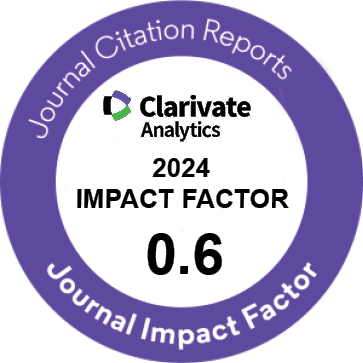| Original Article | |
| Comparison of Quality of Life Between Urban and Rural Menopause Women and its Predictors: A Population Base Study | |
| Hourieh Badali Haghi1, Sevil Hakimi2, Mojgan Mirghafourvand2, Sakineh Mohammad-Alizadeh Charandabi2, Mostafa Farahbakhsh3 | |
| 1Department of Midwifery and Reproductive Health, Aras International Campus, Faculty of Nursing and Midwifery, Tabriz University of Medical Sciences, Tabriz, Iran 2Department of Midwifery and Reproductive Health, Faculty of Nursing and Midwifery, Tabriz University of Medical Sciences, Tabriz, Iran 3Health Services Management research center, Tabriz University of Medical Science. Tabriz, Iran |
|
|
IJWHR 2017; 5: 137-142 DOI: 10.15296/ijwhr.2017.25 Viewed : 5608 times Downloaded : 4553 times. Keywords : Health, Menopause, Quality of life, Women |
|
| Full Text(PDF) | Related Articles | |
| Abstract | |
Objectives: Quality of life is a sense of physical and psychological well-being and a concept affected by various factors such as place of residence. The present study was conducted with the aim to explore quality of life of postmenopausal women in urban and rural areas of Tabriz, Iran. Materials and Methods: The present cross-sectional study was conducted on 544 postmenopausal women from rural and urban areas, selected by cluster sampling method. Data were collected through a 3-part questionnaire consisting of demographic details, quality of life (SF-36) and a research made questionnaire for assessment of physical and psychological menopausal symptom. Results: Following adjustment of basic variables, rural women obtained significantly higher scores in ?physical function?, ?general health? and ?vitality.? Although the subscales of ?bodily pain,? ?social function and ?role limitation? were better in urban women. Multivariate linear regression results revealed factors affecting quality of life, including the number of children, satisfaction with children?s conduct, income, occupation and score of postmenopausal symptoms in urban women; and satisfaction with children?s conduct, income, chronic diseases, age, postmenopausal duration, education, and score of postmenopausal symptoms in rural women. Conclusion: The present study results showed that various dimensions of quality of life were at an acceptable level, but the two groups were significantly different in most subscales. Considering the increasing middle-aged and older population, attention to the quality of life of women in these age groups is crucial. The present study determined the difference in dimensions of quality of life between urban and rural women and identified their possible health requirements. |
Cite By, Google Scholar
Google Scholar
PubMed
Online Submission System
 IJWHR ENDNOTE ® Style
IJWHR ENDNOTE ® Style
 Tutorials
Tutorials
 Publication Charge
Women's Reproductive Health Research Center
About Journal
Publication Charge
Women's Reproductive Health Research Center
About Journal
Aras Part Medical International Press Editor-in-Chief
Arash Khaki
Mertihan Kurdoglu Deputy Editor
Zafer Akan























